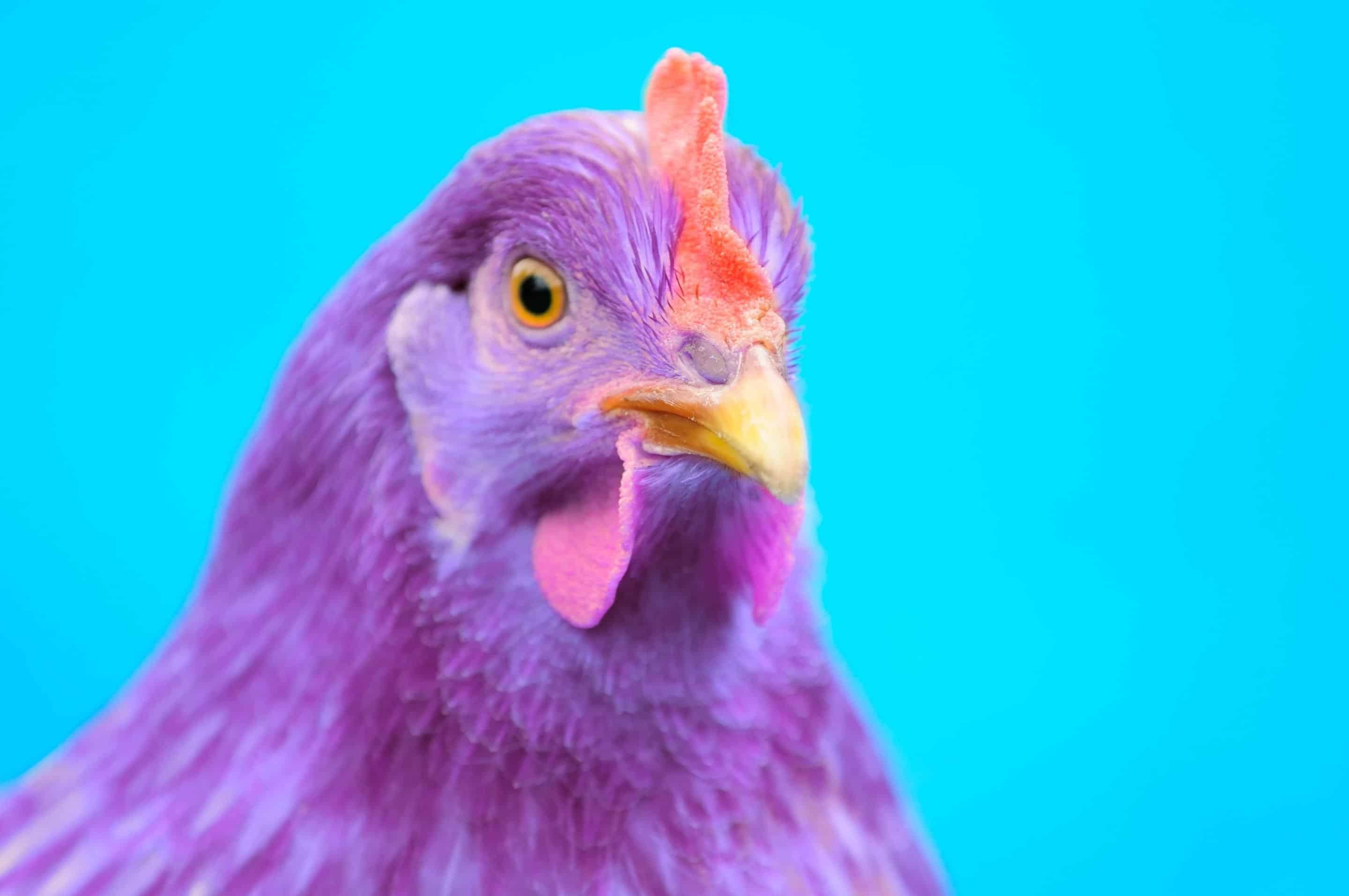Ok, well, not literally, but if you want to be exceptional it’s a good thing to start thinking about becoming a purple chicken.
Let me start from the beginning, courtesy of and inspired by a chapter in Terry O’Reilly’s book, This I Know (a MUST read for any business person in my opinion), where the topic of counterintuitive thinking is explored in more detail.
We all have some level of intuitive thinking that helps us get through the day and make educated personal and business decisions quickly. It’s how we naturally cope with challenging situations without knowing all the details. One definition is “the ability to understand something immediately, without the need for conscious reasoning” or rather basing our decisions on our “gut” feeling or “hunches.” So while “good intuition comes from years of knowledge and experience that allows you to understand how people and the world works,” counterintuitive thinking forces us to abandon all of our preconceived notions.
How many times do you really look for out-of-the-box solutions to problems or opportunities? Really find some creative solution other than the tried and true, most obvious, or “what everybody else is doing
When you hear these kinds of solutions in hindsight, they seem so blatantly obvious, but opening your mind and getting to then can sometimes be excruciatingly challenging.
The Meat of the Story
The story goes like this. Chicken farmers in Nakuru, Kenya, of modest means, were having a big issue. They were losing 80% of their chicks to hungry hawks and eagles that would swoop down and grab them in their outdoor coop as they couldn’t afford anything more than simple fencing. No canopy. No building. No protection from air attacks. Once the chicks were older though, they learned to run into the shade when they see a shadow of their predators overhead.
Faced with an untenable situation, and without resources to build a proper coop, they had a lightbulb moment when they realized there was one colour in the natural world birds of prey don’t see as food – purple. Changing the colour of their chicks was the goal.
They got together and developed a harmless, biodegradable paint and started a new sub-industry painting chicks for about four cents each. Voila!
When the Hawks now swoop down, take a look at the purple chicks, decide they’re not edible and fly off. Brilliant, right?
However, now they were faced with an even bigger problem. Instead of losing 80% of the chicks, they now had 80% surviving and had to figure out how to feed the multiplying flocks of birds without any extra money for poultry feed.
Along came an unexpected resource – insects. Chickens love to eat insects, which by the way, are a great source of protein. And, there are tons of termites right under the soil in Kenya, but without an easy way to access them it was half a solution. A local NGO helped with some research and found another community in Kenya that liked to eat termites and used an ingenious way to capture them – by using bundles of water-soaked waste crop stalks. Termites loved these and came right up to the surface to feed, making them easy to capture.
That’s what the farmers did. Using waste crop by-products – which cost them nothing – they fed their now growing flock of chickens with an endless supply of termites and the chickens couldn’t have been happier.
Problem solved. More chickens surviving while providing a better lives for their families – and a better ROI, all using counterintuitive thinking.
As Terry summarizes in his book, “The key to counterintuitive thinking is understanding human nature. Or in the case of Kenyan chicken farmers, understanding Mother Nature. The colour purple is rarely the colour of food, so animals don’t “see” purple chicken as dinner. The colour blue has a related effect on humans. Very few foods are blue – even blueberries are really purple – so when people diet, they are often told to paint their dining rooms blue, because it diminishes appetite.”
Or to put it succinctly, “As the word implies, a counterintuitive idea is counter to one’s normal instincts. It is often brazen, it ignores conventional wisdom, and it takes the path less traveled.” And “great marketing is about taking leaps.”
So, the next time you face a business or even personal challenge, free your mind to think of alternate solutions that are counterintuitive and completely out of the coop.
You just might surprise yourself with a purple chicken of your own.
Please feel free to like, comment and share this if you found it helpful.



